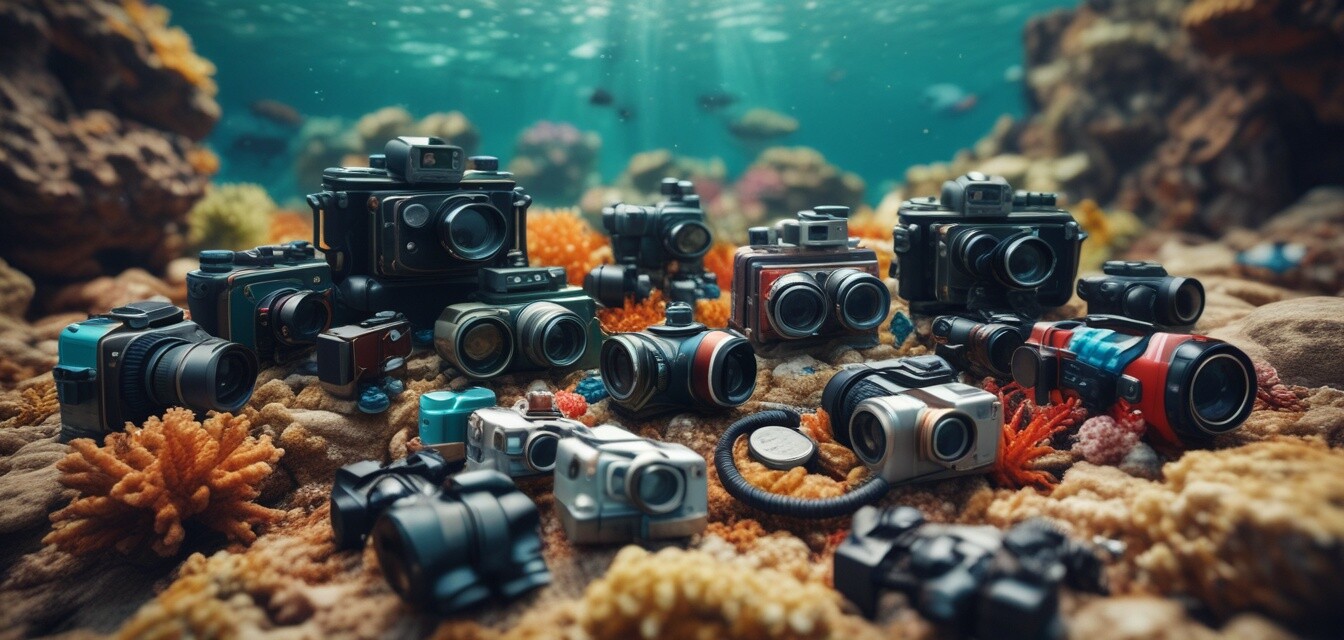
The essential features to look for in underwater cameras
Key Takeaways
- Select a model with a suitable depth rating for your activities.
- Look for image quality features such as sensor size and resolution.
- Consider lens compatibility for versatile photography.
- Check for additional features like video recording capabilities and autofocus performance.
- Evaluate battery life and ease of use for extended underwater sessions.
Underwater photography opens up a stunning world of vibrant colors and unique perspectives. Whether you're a beginner or a professional photographer, choosing the right underwater camera is crucial for capturing high-quality images. In this guide, we will explore the key features and specifications to consider when selecting an underwater camera to ensure you make an informed decision.
Key features to consider
When searching for an underwater camera, consider the following essential features:
| Feature | Description | Importance |
|---|---|---|
| Depth rating | Indicates how deep the camera can be submerged without damage. | High |
| Image sensor | Determines the camera's ability to capture clean, detailed photos. | High |
| Video capabilities | Ability to shoot high-definition underwater video. | Medium |
| Lens compatibility | The option to attach various lenses for different perspectives. | Medium |
| Autofocus system | Quality of the autofocus features for fast and reliable focusing. | Medium |
| Batteries | Duration of battery life and availability of replacements. | High |
Understanding depth ratings
Depth ratings are a critical aspect of underwater cameras. Cameras come with varying depth ratings, which dictate how deep you can dive without damaging the equipment. The typical range is from 10 meters (33 feet) for compact cameras to 60 meters (197 feet) for advanced models. When planning underwater activities, ensure the camera's ratings align with your diving depth. For more information on diving gear, check out our section on diving equipment.
Importance of image sensors
The image sensor directly impacts the quality of photos produced by your camera. Larger sensors generally produce better-image quality, especially in low-light conditions. Look for cameras with sensors such as APS-C or Micro Four Thirds for exceptional clarity and performance. For more insights on what to look for in lenses, visit our guides on lenses for underwater photography.
Video capabilities
More photographers are focusing on video content than ever before. When selecting an underwater camera, check for its ability to capture at least 1080p resolution video, with some advanced options offering 4K resolution. This feature can complement your photography portfolio nicely. If you're interested in additional accessories to enhance your video experience, see our list of mounts and accessories.
Lens compatibility
Underwater photography may require multiple lenses to adapt to different shooting conditions. Choose a camera that allows for lens swapping, which can enhance versatility. Wide-angle lenses are excellent for capturing expansive underwater vistas, while macro lenses are perfect for detailing creatures and coral. For further information on lenses, don't forget to check our guide on lenses for underwater photography.
Autofocus systems
A reliable autofocus system is essential for sharp images, especially in unpredictable underwater environments. Cameras equipped with phase detection autofocus will generally perform better than those with contrast detection only. Check for reviews or specifications that emphasize faster and more accurate focusing.
Battery life and ease of use
Long battery life is crucial for extended dives or shoots. Look for models offering a minimum of 2-3 hours of shooting time. Additionally, consider how user-friendly the camera interface is. If you're new to underwater photography, a simpler interface can make your experience much more enjoyable. For tips on maximizing your underwater photography skills, visit our tips and techniques blog section at Tips and Techniques.
Pros
- High image quality captures stunning underwater scenes.
- Durable design that can withstand tough conditions.
- Flexibility with lens options encourages creativity.
- Video capabilities increase content creation opportunities.
Cons
- More complicated models can be overwhelming for beginners.
- Quality features may come at a higher price point.
- Some materials may degrade over time with regular ocean exposure.
Conclusion
Choosing the right underwater camera is vital for capturing breathtaking underwater moments. By focusing on depth ratings, image quality, video features, and more, you'll make an informed choice that suits your needs. Remember to explore our other categories for underwater photography gear, such as underwater lighting and underwater drones, to enhance your photography toolkit. Enjoy your underwater adventures and happy shooting!

